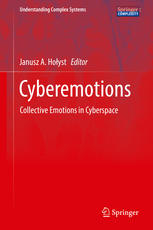

Most ebook files are in PDF format, so you can easily read them using various software such as Foxit Reader or directly on the Google Chrome browser.
Some ebook files are released by publishers in other formats such as .awz, .mobi, .epub, .fb2, etc. You may need to install specific software to read these formats on mobile/PC, such as Calibre.
Please read the tutorial at this link: https://ebookbell.com/faq
We offer FREE conversion to the popular formats you request; however, this may take some time. Therefore, right after payment, please email us, and we will try to provide the service as quickly as possible.
For some exceptional file formats or broken links (if any), please refrain from opening any disputes. Instead, email us first, and we will try to assist within a maximum of 6 hours.
EbookBell Team

4.4
42 reviewsThis is the first monograph of its kind introduces the reader to fundamental definitions, key concepts and case studies addressing the following *What are emotions? How do they emerge, and how are *How can we *What are *When do emotions and *How can we model emotions and their changes? *What role do emotions play in online Edited and authored by leading scientists in the field, this book serves as an introduction and reference resource for researchers working on applications of complex systems methods in the social sciences, as well for social scientists, psychologists, online-community experts and computer scientists.
H. Eugene Stanley, Professor, Boston University
We are what we communicate: communicare ergo sum! With the explosive hyper exponential growth of the internet suddenly new ways of communication are emerging that give rise to a digital 'Homo empathicus', each of us suddenly being able to share thoughts and feelings with millions if not billions of others. This book is a true treat, a timely milestone that gives us insight in the co-evolution of the way we interact with each other and the communication technology provided through this new seemingly endless flexible digital world. Prof. Holyst did a great job bringing together real experts in the field of cyber emotions, they give us a reflection of where we come from and, as important, they open up new vistas of where we are going.
Peter M.A. Sloot, Professor, University of Amsterdam, the Netherlands, Nanyang University, Singapore
The book Cyberemotions embraces the topic of emotion studies in cyberspace from a very rich spectrum of points of view and applications. It is particularly interesting reading the theoretical foundations underlying the concepts of Cyberemotions and how these concepts can be captured, modeled and implemented in real-time applications. Exploring collective emotions in online settings is extremely challenging and opens new directions of research.
Catherine Pelachaud, Director of Research CNRS at LTCI, TELECOM ParisTech
Rafał Rzepka, Professor, Hokkaido University